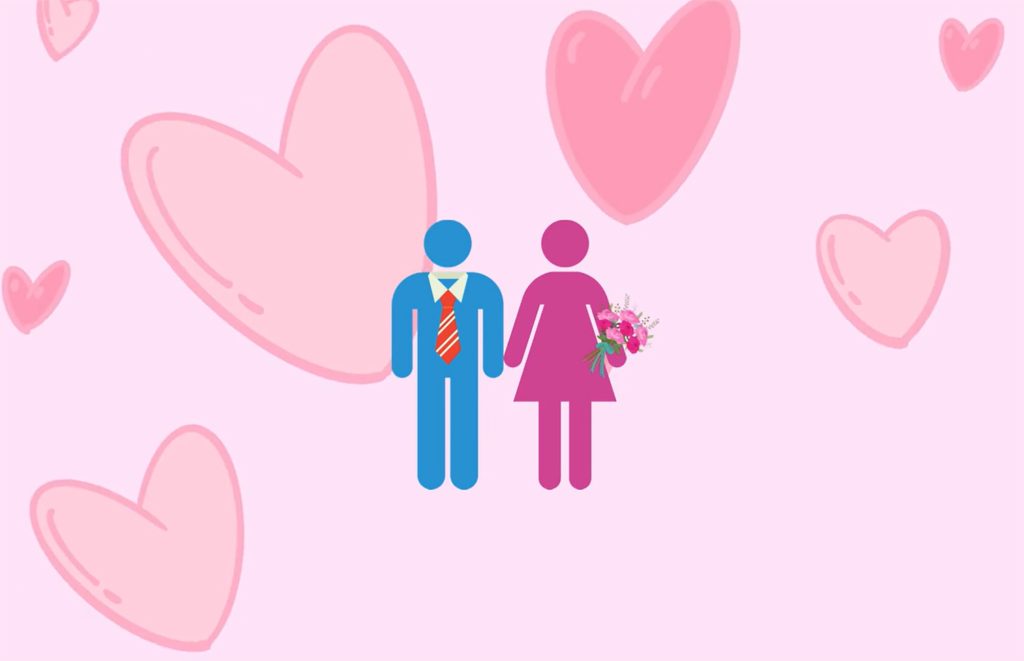We All Love to Be Loved, But Women May Experience Love More Frequently than Men
Conventional wisdom holds that men and women approach romance differently. But new research suggests that love is important for well-being regardless of gender—and the differences that do exist may hint at the evolutionary basis of love.
“In contrast to popular proclamations, this article documents striking similarities across gender in the experience of love,” wrote Saurabh Bhargava (Carnegie Mellon University in reporting his study in Psychological Science. “Across similarities and differences, the findings allude to an adaptive, universal, and highly functional emotion that may play a central role in relationship formation and sustenance.”
In the first part of this study, Bhargava analyzed data, originally collected by an advertising analytics firm, in which 3,867 adults ages 18 to 64 reported their social activity during their waking hours every 30 minutes for 10 days using a mobile app. Participants were also asked to report on their experience of 15 emotions, including boredom, excitement, loneliness and, most importantly, love.
During this time, married and unmarried participants reported feelings of love in 3.2% of their responses, though women did so in 4% of responses while men did so in just 2.3% of responses. This amounts to a gender love gap of 33% when adjusted for other demographic differences, Bhargava wrote. When he took a closer look at this gap, Bhargava found that although men were less likely than women to report experiencing love in the presence of a partner or their friends, the majority (79%) of the gender love gap was the result of men spending less time than women with their children and thus having fewer opportunities to experience parental love.
Though there were no overall differences in love directed toward a partner among heterosexual married men and women, there were notable differences in how men and women expressed love over the course of a relationship, Bhargava said in an interview.
Participants who had been married for 3 or more years were 34% less likely to report feelings of love while spending time with their partner than those in their first 3 years of marriage. This effect was primarily driven by the trajectory of partner love as experienced by women over time, Bhargava noted. Though men’s reported feelings of love while spending time with their spouse dropped only modestly across marital cohorts, women were more than twice as likely as men to report feelings of love when spending time with their partner during their engagement. This was followed by sharp reduction in women’s feelings of partner love within the first 2 years of marriage, at which point men and women who remained married experienced similar levels of partner love as men and women who had been married longer.
Despite the presence of a gender love gap, Bhargava found an equally strong relationship between feelings of love and participants’ emotional well-being, including mood and happiness, regardless of gender.
“Partner love, when experienced, predicted a massive increase in mood across marital cohorts for both genders, an increase equivalent to about 3 times the hedonic difference between a typical Saturday and Monday,” Bhargava wrote.
The study revealed other demographic differences, with Black participants reporting feelings of love more often than White participants; participants ages 30 to 39 reporting love 33% more often than those ages 18 to 29; and participants with an annual household income under $50,000 reporting love 44% more often than wealthier participants.
“This demographic heterogeneity supports assertions as to the cultural universality of love while still allowing for potential sociocultural variability in experience or expression,” Bhargava wrote.
In a subsequent study, Bhargava surveyed 7,255 participants, 3.1% of whom reported experiencing feelings of love within the previous hour. Similar to the prior study, men were 30% less likely to report feeling love than women. Additionally, men and women were about equally likely to report feelings of partner love, but men were 43% less likely to report feeling love toward a child and 38% less likely to report feeling love toward another family member.
“This evidence points to largely similar experiences of love, particularly partner love, across gender,” Bhargava concluded. “The differences that were found . . . seem consistent with evolutionary or otherwise functional accounts that posit gender differences in the importance of love for maintaining child and partner relationships.”
Feedback on this article? Email apsobserver@psychologicalscience.org or login to comment.
Reference
Bhargava, S. (2024). Experienced love: An empirical account. Psychological Science, 35(1), 7–20. https://doi.org/10.1177/09567976231211267






APS regularly opens certain online articles for discussion on our website. Effective February 2021, you must be a logged-in APS member to post comments. By posting a comment, you agree to our Community Guidelines and the display of your profile information, including your name and affiliation. Any opinions, findings, conclusions, or recommendations present in article comments are those of the writers and do not necessarily reflect the views of APS or the article’s author. For more information, please see our Community Guidelines.
Please login with your APS account to comment.